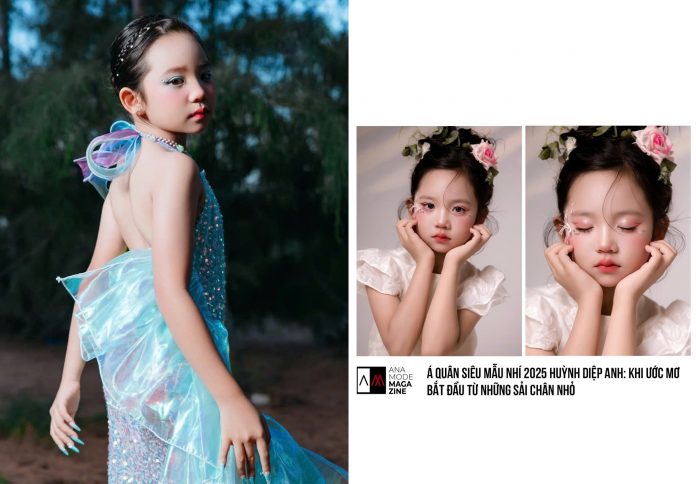Across the Brooks Range, one of the most remote and pristine landscapes in Arctic Alaska, a disturbing and dramatic transformation is taking place. Over 75 streams and rivers have begun to run a shocking, opaque orange, transforming crystal-clear waterways into channels resembling rivers of rust. This phenomenon, which looks ominously similar to the toxic runoff from mining operations, is a chilling consequence of rapid climate change. The science is stark: the rapidly warming Arctic is thawing its permafrost, releasing massive, ancient deposits of iron and other heavy metals that were previously locked away for millennia. The resulting chemical reaction is polluting vital ecosystems with toxic acidity, threatening the future of Arctic aquatic life, and serving as one of the most visually arresting alarms yet sounded by a planet in crisis.
The Stark Visual of the Arctic’s Alarm
The visual evidence of the rusting rivers in Arctic Alaska is immediate and undeniable. Satellite imagery and on-the-ground observations reveal once-clear streams now colored in an intense, vibrant orange or sometimes a milky, opaque yellow. This discoloration is not uniform but appears across a vast, remote swath of the Brooks Range, indicating a fundamental, widespread environmental change.
The color is created by iron hydroxide precipitate, the same chemical compound that forms common rust. While similar phenomena are typically found downstream from abandoned mine sites, the rivers of the Brooks Range are hundreds of miles from any major industrial activity. This rules out human extraction as the direct cause and points unequivocally to a geological process being violently accelerated by external forces. The speed and scale of this contamination make it one of the most dramatic physical manifestations of the climate crisis in the rapidly warming high Arctic.
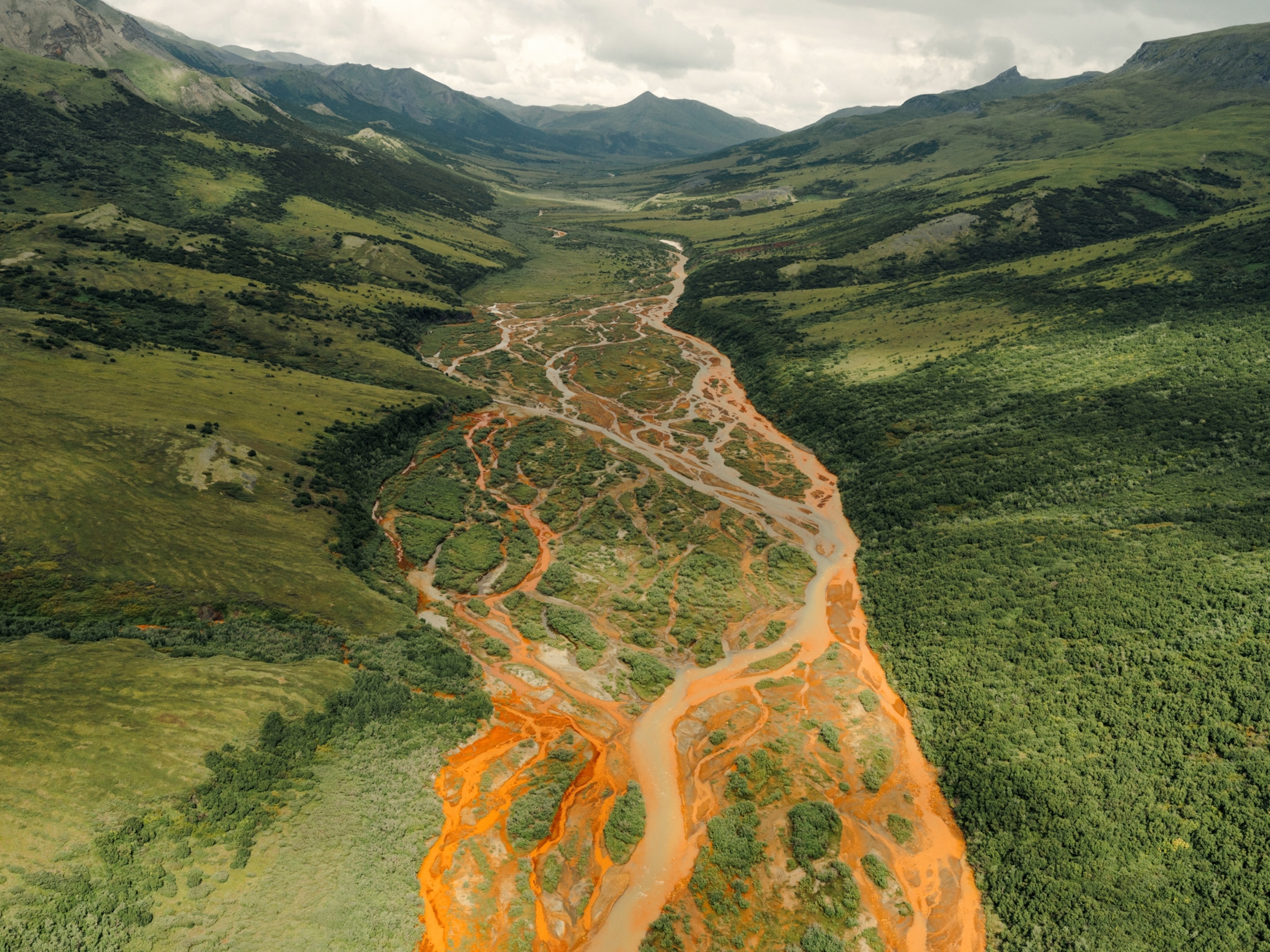
The Permafrost Veil is Lifting
The root cause of the toxic discoloration lies beneath the surface in the permafrost, the permanently frozen ground that covers huge portions of the Arctic. For tens of thousands of years, this frozen layer acted as a colossal, protective cap over geological deposits.
Beneath this frozen shield lie vast, stable deposits of sulfide minerals, most commonly pyrite, or “fool’s gold.” These minerals contain iron and other heavy metals (like zinc, copper, and lead) that are chemically inert and locked away as long as they remain frozen. However, the Arctic is warming up to four times faster than the global average, causing the deep permafrost layer to rapidly thaw and destabilize. This thawing process exposes the stable sulfide minerals to the two essential ingredients for a powerful chemical reaction: oxygen from the atmosphere and water from the melt.
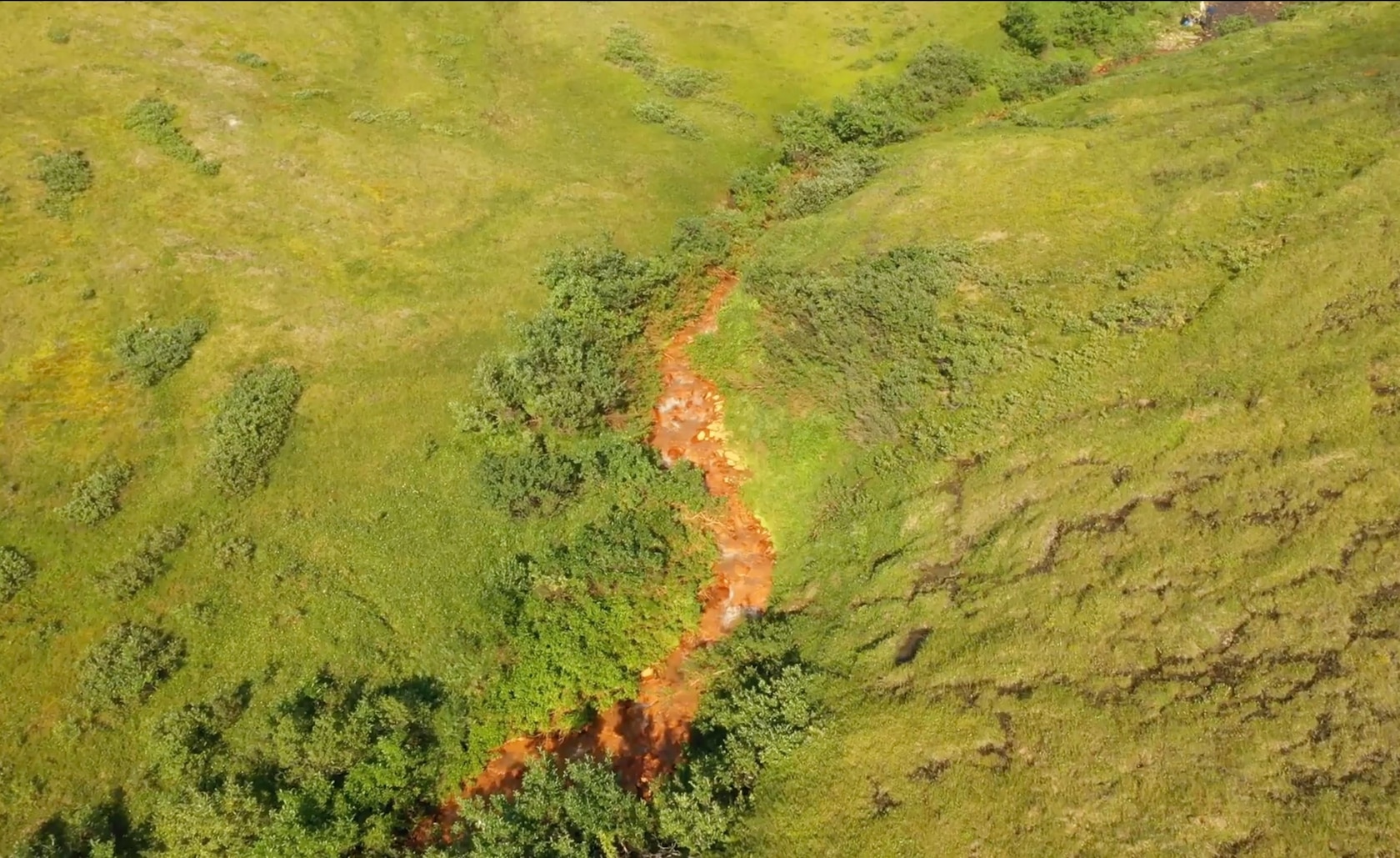
The Silent Process of Mineral Oxidation
The process that creates the orange rivers is known as oxidation, a slow-motion form of chemical weathering that releases acid and heavy metals into the water system. It is essentially the rusting of the earth itself.
When the sulfide minerals are exposed to oxygen and water, they chemically break down, releasing hydrogen ions and creating sulfuric acid. This acid then dissolves the surrounding rock and soil, mobilizing the heavy metals that were once harmlessly locked within the permafrost. The water’s pH plummets, turning the streams highly acidic. When the acidic, metal-rich water encounters more oxygen, the dissolved iron precipitates out of the solution in the form of bright orange iron hydroxide—the visible “rust.” This process is often referred to as Acid Mine Drainage (AMD), but in the Brooks Range, it is a devastatingly natural event driven by anthropogenic climate change.
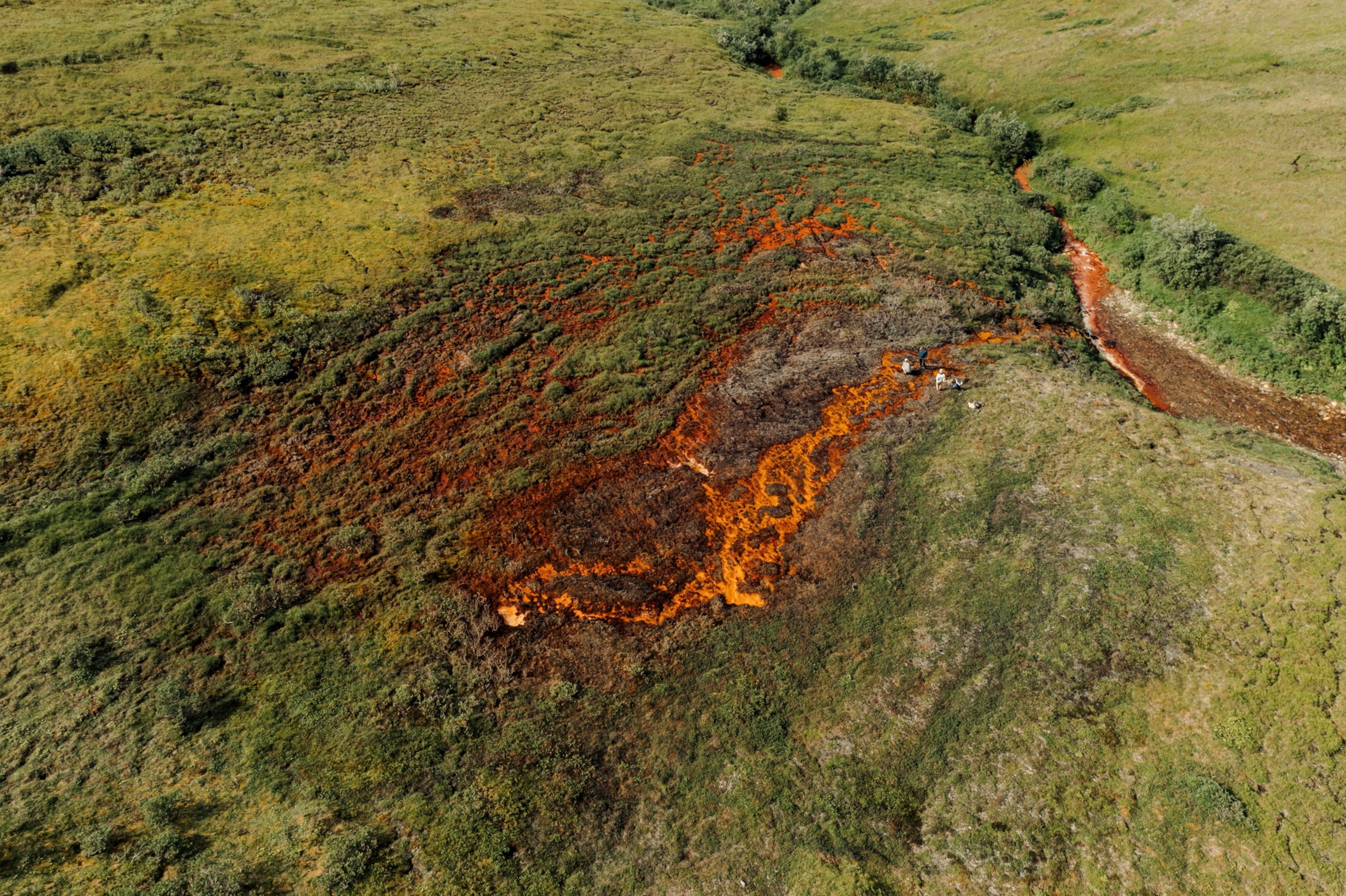
An Ecosystem on the Brink
The environmental consequences of the orange rivers are severe and potentially catastrophic for the delicate Arctic ecosystem, which is structured around pristine, low-nutrient waterways.
The primary impact is the toxicity caused by the combination of heavy metals and low pH (high acidity). The orange precipitate coats the riverbeds, suffocating the essential base of the food chain, including macroinvertebrates like insect larvae. Scientists have observed sharp declines in these populations in affected streams. More critically, the metal contamination poses an existential threat to salmon populations. Arctic salmon rely on these clean streams for spawning, and the eggs and young fry are highly sensitive to both acidity and heavy metal poisoning. Since salmon are a critical food source for local indigenous communities and the broader terrestrial ecosystem (bears, birds), the loss of these waterways could trigger cascading ecological and cultural failures.
The Global Warning from the Brooks Range
The phenomenon of the rusting rivers stands as a stark, dramatic indicator that climate change is no longer a distant threat but a powerful, active geological force reshaping the planet’s surface.
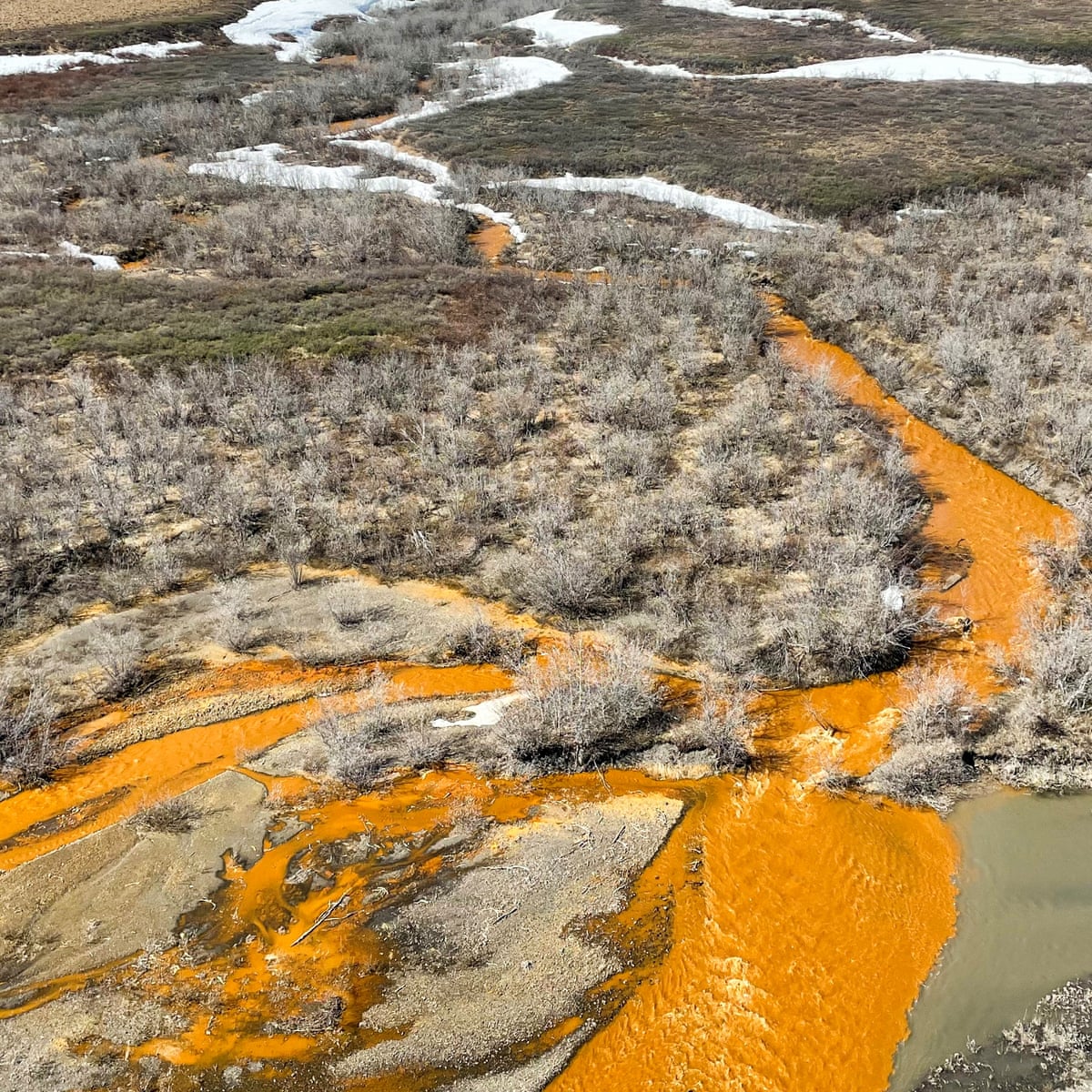
The Brooks Range incident demonstrates that the thawing permafrost is not only releasing greenhouse gases, but is also unlocking entirely new pathways for ancient contaminants to poison the environment. Scientists are monitoring the spread of the orange streams, which are appearing at an accelerating rate across the Arctic. This signals a future where vast stretches of the northern wilderness could become chemically altered, impacting not only local wildlife but the fundamental water security of the region. The orange rivers are a clear, urgent warning: the world is rapidly crossing geological tipping points, and the cost of inaction will be measured in the permanent destruction of once-pristine habitats.





